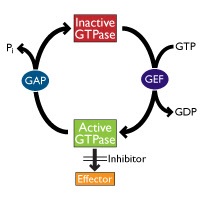Senescence atlas reveals an aged-like inflamed niche that blunts muscle regeneration
In their latest publication in Nature, Dr. Moiseeva et.al., studied cellular senescence in skeletal muscle, carrying out analyses at the molecular and functional levels using senescent cells isolated and defined in vivo.
In this post, we summarise the main conclusions of this article, showing in particular that senescent cells are integral components of the skeletal muscle regenerative niche that repress regeneration at all stages of life.
Senescent cells are detrimental to muscle regeneration
The technical limitation of the availability of senescent-cell was solved by combining single-cell transcriptomics and a senescent-cell enrichment sorting protocol. And isolated different senescent cell types from damaged muscles of either young or old mice were analyzed by measuring the senescence-associated beta-galactosidase (SA-β-gal) activity and additional markers of senescent cells. SA-β-gal activity was measured by using a probe ”SPiDER-βGal”. The result of the analysis indicates that injury induced a transient accumulation of senescent cells. Thus, senescent cells were detrimental to muscle regeneration (Figure 1).
Figure 1: The impact of senescent cells on muscle regeneration.
Cell proliferation is halted by senescent cells
Moreover, transcriptome, chromatin, and pathway detailed analyses revealed the conservation of cell identity traits as well as two universal senescence hallmarks (inflammation and fibrosis) across the cell type, regeneration time, and aging.
In other words, senescent cells create an aged-like inflamed niche that mirrors inflammation associated with aging (inflammageing) and arrests stem cell proliferation and regeneration. By contrast, transplantation of senescent cells delays regeneration.
What next?
In Nature’s article, Dr. Moiseeva et.al., illustrates a technique for isolating in vivo senescent cells. The interesting part of this study is, by defining a senescence blueprint for muscle, not only do they reveal the unproductive functional interactions between senescent cells and stem cells in regenerative niches, but also they suggest this interaction can be overcome.
Since senescent cells also accumulate in human muscles, these findings open potential paths for improving muscle repair throughout human life.
Accordingly, studying cellular senescence in skeletal muscle will be one of the interesting topics to be discussed in the future.
Keen to study senescence?
Find out more about our partner Dojindo’s solutions for studying cellular senescence in live and fixed cells, and in particular the ”SPiDER-βGal” probe used in this Nature article to measure the SA-β-gal activity.
Get access now to quick & easy tools to study this physiological process and push forward your research.
Reference
Moiseeva V, Cisneros A, Sica V, et al. Senescence atlas reveals an aged-like inflamed niche that blunts muscle regeneration [published correction appears in Nature. 2023 Feb;614(7949):E45]. Nature. 2023;613(7942):169-178. doi:10.1038/s41586-022-05535-x.
Acknowledgment
Special thanks to Mr. Yuki Tatenaka (Senior Researcher), our partner from Dojindo Laboratories, JAPAN, for writing this article.




